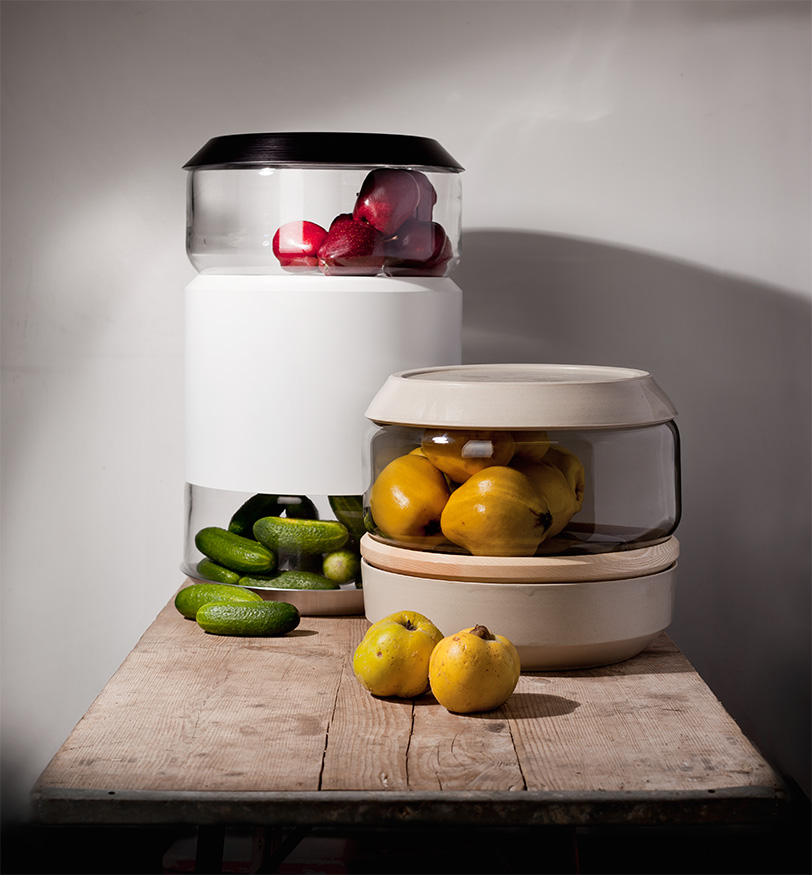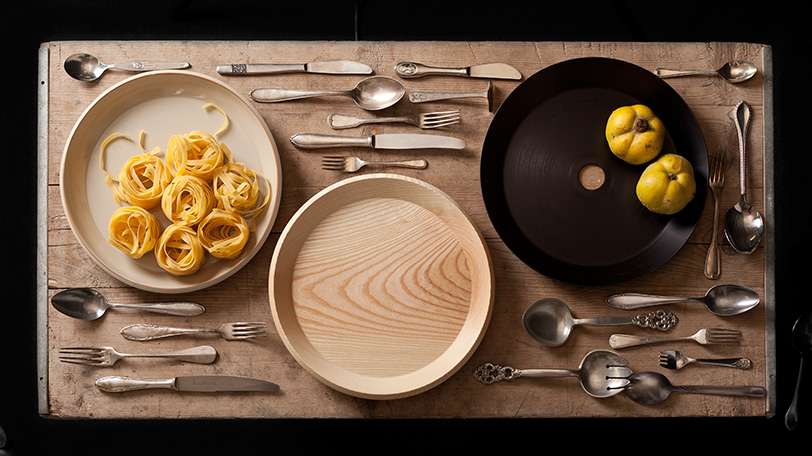You Decide How to Use These Undefined Objects

We tend think of designs as, by definition, the solution to some specific problem. This neat series of non-specific household objects intentionally leaves that key part out of the equation, asking the question: what happens when meaning must evolve from use?

Roman Heide is a French-, Italian-, and English-speaking German product designer who treats household objects with an open-minded versatility one might expect from someone familiar with various verbal and visual languages.

Playing with multiple materials – including tinted and clear glass, polished and anodized aluminum, powder-coated steel, ash wood, white plastic and paper mache – he probes the possibilities of physical and mental associations, conjured at the intersection of objects and perceptions.

There is no attempt to make any one item the centerpiece of the collection, nor to specify the manner in which it should be used. A saucer could be a serving dish, dinner plate or perhaps a chopping block for firewood. They do mostly seem useful in the kitchen, though.
There is a kind of guerrilla-art quality to the finished pieces – they could slip unnoticed into a cupboard or sit indefinitely on a table, only to take on a new function the next time they are picked up, moved and employed.
“The work undefinierte objekte creates objects nearly free from associations with known categories. Like people who improvise or like playing children do, these objects become what the are in the moment of use. This means, the user is free to decide what the specific object serves for. He gains freedom concerning his objects, a freedom completely normal for playing children.”

“The objects can be stacked and assembled in a very simple and intuitive way. Doing this they gain different meanings and possibilities of using them. the material has strong influence on the way objects are perceived. For this reason various different materials were chosen: glass – clear and tinted, polished aluminium, anodized aluminium, powder coated steel, ash wood, white plastic, stoneware and papier mâché. Bringing different parts together various connotations for various ways of use are triggered.”